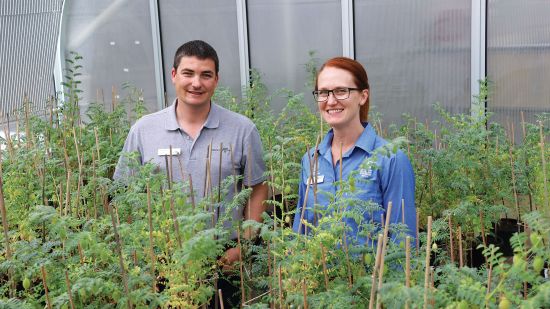Courtesy: GRDC Ground Cover, original article published online – Knowledge is power when managing fungicide resistance in pulses | Groundcover (grdc.com.au)
Australian pulse production is threatened by the risk of fungicide resistance. Most crop species are susceptible to one or more fungal diseases and although breeding has developed some resistant varieties, there are still susceptible varieties grown which require more-frequent fungicide applications.
Pulse pathologist Sara Blake from the South Australian Research and Development Institute (SARDI) says epidemiological knowledge of each disease-causing fungi is fundamental to disease management.
“GRDC has invested to address knowledge gaps through strategic partnerships and national projects to tackle key pulse diseases including recent investments to determine epidemiology and economic thresholds for management of Asochyta blight and Botrytis diseases in lentil and faba beans,” she says.
Agriculture Victoria pulse pathologist Dr Joshua Fanning says that although we do not yet have field relevant fungicide resistance in pulses, we are at high risk of it developing.
With all the fungicide options available we need to ensure we maximise their longevity to keep options available for disease control.
Pathology 101
The risk of developing fungicide resistance in crops depends on three factors: pathogen risk, fungicide risk and agronomic factors.
“It is important to remember that some pathogens can cross pulse species, such as faba beans, vetch and lentils. They are all affected by Botrytis cinerea and B. fabae, and if grown in high-risk situations it further increases the risk of fungicide resistance developing,” Dr Fanning says.
The pulse diseases at highest risk of developing fungicide resistance are Botrytis grey mould in lentils and vetch, chocolate spot in faba beans and Ascochyta blight in lentils and chickpeas.
Generally, growers should be aware of the following issues when it comes to managing these pulse diseases:
- They are polycyclic with short, multiple disease cycles per season and can affect all crop growth stages. This means repeated fungicide applications may be required across the season, which increases selection pressure, potential genetic changes within the pathogen population, and the risk of resistance developing.
- These pathogens are high spore producers, which increases the chance of an insensitive mutant in the population.
- Their wind-dispersed spores enable spread to other plants, crops and regions.
- Most Botrytis and Ascochyta pathogens have a sexual stage in the pathogen life cycle, meaning genetic recombination increases the risk of resistance developing.
“Of the three factors contributing to fungicide resistance risk, the agronomic factors, which also include environmental factors, are arguably the most important,” Ms Blake says.
“Wind and rain will influence the disease severity and spread in a local geographic area, so these diseases are community diseases. Without disease pressure, fungicide use is not normally necessary and fungicide resistance risk would be non-existent.”
Ms Blake recommends that growers start by choosing pulse varieties with high levels of disease resistance and then test seed for sowing for pathogen infection or contamination, such as sclerotes (fungal resting structures).
“Seed testing can inform growers of disease risk. Seed treatment may then be appropriate,” she says.
“Fencelines neighbouring the previous year’s infested stubble should be scouted for diseased plants and growers should talk to their neighbours about which pulse crop is being grown where, to try and avoid disease spread between adjacent pulse fields.”
Dr Fanning says integrated practices are fundamental for disease management in pulses.
Fungicides are only one tool in the kit and only use them as part of an integrated disease management strategy. Timing of application is critical as pulses are indeterminant crops; they will keep growing and can recover from a disease infection.
Ms Blake says local seasonal knowledge is important to support disease management. She encourages growers to follow their regional crop pathologist on X (Twitter).
More information: Sara Blake, sara.blake@sa.gov.au; Joshua Fanning, Joshua.fanning@agriculture.vic.gov.au

